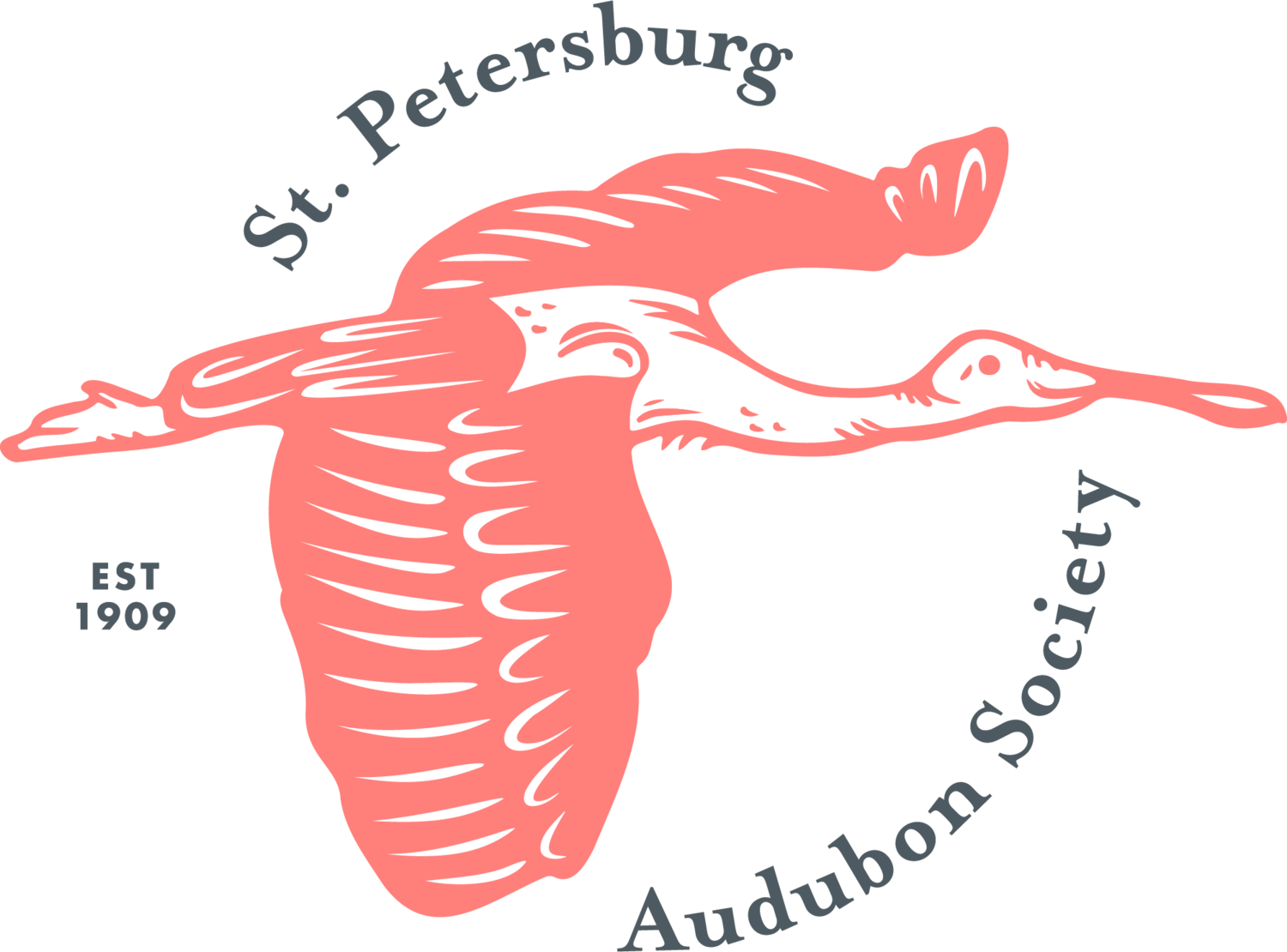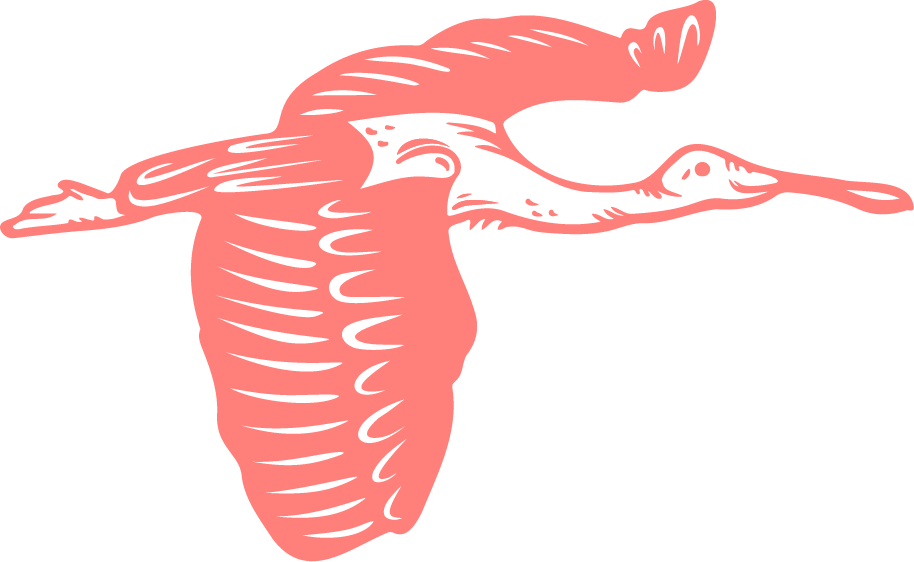
Our history
In 1912, St. Petersburg Audubon Society sent the state legislature a petition, with signatures, that was 70 feet long.
-
1900
The first National Audubon Society’s Christmas Bird Count (CBC) was held on Christmas Day, 1900, when 27 birders noted all the birds they saw during the day. Those birders covered 25 different areas, mostly in cities in the Northeastern U.S.
Florida Audubon Society (FAS) was formed in Maitland, Florida.
-
1909
Founding of the St. Petersburg Branch of the Florida Audubon Society for the Protection of Birds by Katherine Bell Tippetts (later renamed the St. Petersburg Audubon Society). The first meeting is held at the Belmont Hotel.
-
1910
St. Petersburg Audubon Society (SPAS) posts summaries of state bird laws against killing of songbirds or game birds out of season.
Tippetts convinces the publisher of The Boys World to remove air-gun ads.
-
1912
SPAS is involved in an effort to get state laws to protect Robins – FAS developed a bill outlawing the killing or capture of Robins. SPAS sent the state legislature a petition that, with signatures, was 70 feet long.
FAS and Tippetts urge passage of a law to establish Florida Fish & Game Commission.
During the first decade, SPAS members make annual, end of the year excursions to “Bird Key” (now known as Indian Key).
-
1913
Congress passed the Migratory Bird Treaty Act.
-
1916
SPAS publishes an informational booklet about the organization and includes a summary of the bird laws of Florida.
-
1920
SPAS becomes a leader in creating bird sanctuaries. Pinellas County has 11.
SPAS and FAS help support the federal migratory bird laws.
SPAS helps fund a warden to protect bird colonies on local islands until they receive federal protection in 1921.
Tippetts is elected the first woman president of FAS and serves until 1924.
-
1923
By 1923, 30 municipal bird sanctuaries are established in Florida.
FAS persuades the legislature to make bird study required in public education.
-
1925
SPAS creates and supplies Junior Audubon classes in Pinellas schools.
SPAS comes up with the idea for naming a state bird. Following a vote through the schools, the Eastern Mockingbird is chosen (renamed the Northern Mockingbird ).
As Chair of the Division of Conservation for the General Federation of Women’s Clubs (GFWC), Tippetts encourages states and women’s groups to name a bird for each state.
Daisy Morrison becomes first Chair of SPAS Pinellas CBC and serves in that capacity for the next 35 years. The first Pinellas CBC was held in the Gulfport area and 50 species were recorded.
-
1932
Tippetts publishes a pamphlet of birds of the states (for use in education) in Nature Magazine.
-
1934
Dr. Herbert R. Mills, Tampa pathologist and conservationist, helped establish the Tampa Bay Audubon Wildlife Sanctuaries and worked with Rachel Carson to point out the dangers of pesticides. Dr. Mills donated the funding to the Florida Audubon Society of which he was a board member for the hiring of Fred Schultz in spring 1934 to oversee the bird sanctuaries in Tampa Bay. Dr. Mills also bought a boat for the sanctuary work, named Audubon.
-
1935
Rousseau Bird and Game Reservation is established in Pinellas County.
-
1937
The St. Petersburg Wildlife Sanctuary is established by an act of the Florida legislature.
-
1940
Tippetts steps down as SPAS President and becomes President Emeritus.
-
1941
Mary Louise Mills (formerly the Vice President 1937-40) becomes President. Through the leadership of Tippetts and Mills, outdoor nature education, supplemented with indoor programs in Pinellas County, becomes the forerunner of the nature center movement now sponsored throughout the U.S. by National Audubon society (NAS).
-
1944
The Log of Whisky Stump is published by FAS. The report was prepared by Dr. Herbert R. Mills (husband of Mary Louise Mills) and describes waterfowl’s importance to ecology in Tampa Bay. He noted that a rookery that had been trying to establish itself since 1921 (700 birds) had grown to 50,000 birds at the time of this report.
-
1941 - 1945
SPAS meetings are suspended during war years. However, Mary Lou Mills continued educational events in schools, as well as field trips for the Boy Scouts and weekly bird walks.
-
1945
SPAS business meetings resume, weekly field trips, Junior Audubon Clubs and education programs are held.
-
1947
SPAS begins NAS screen tour and lecture series.
-
1950
Katherine Bell Tippetts passes away at the age of 85.
It is noted that huge numbers of American Robins are seen during this winter.


